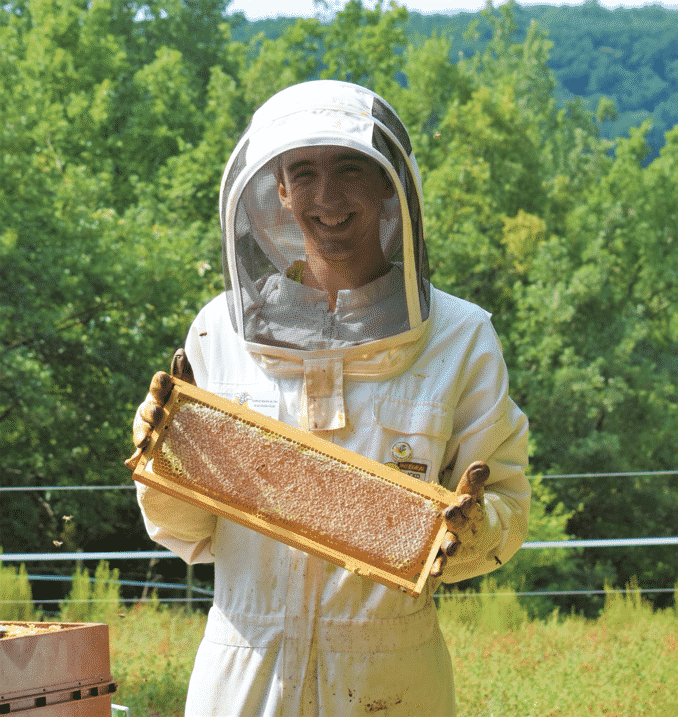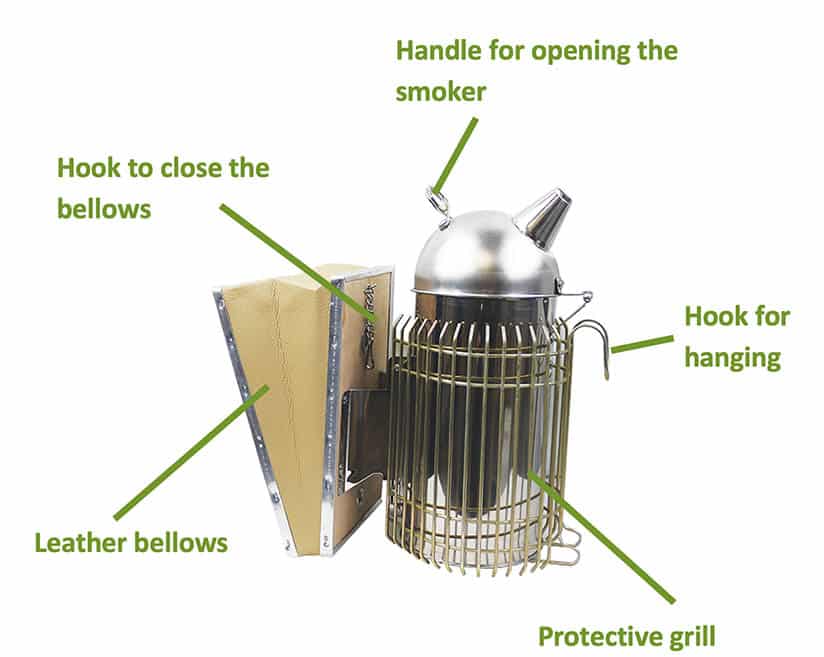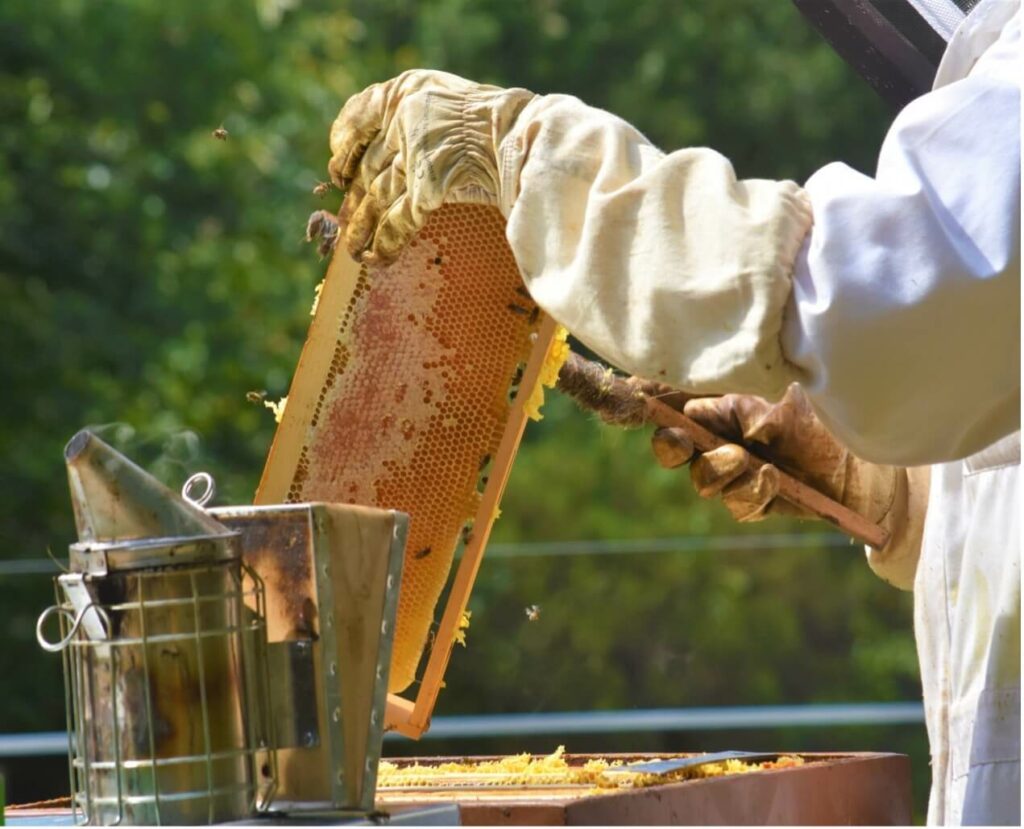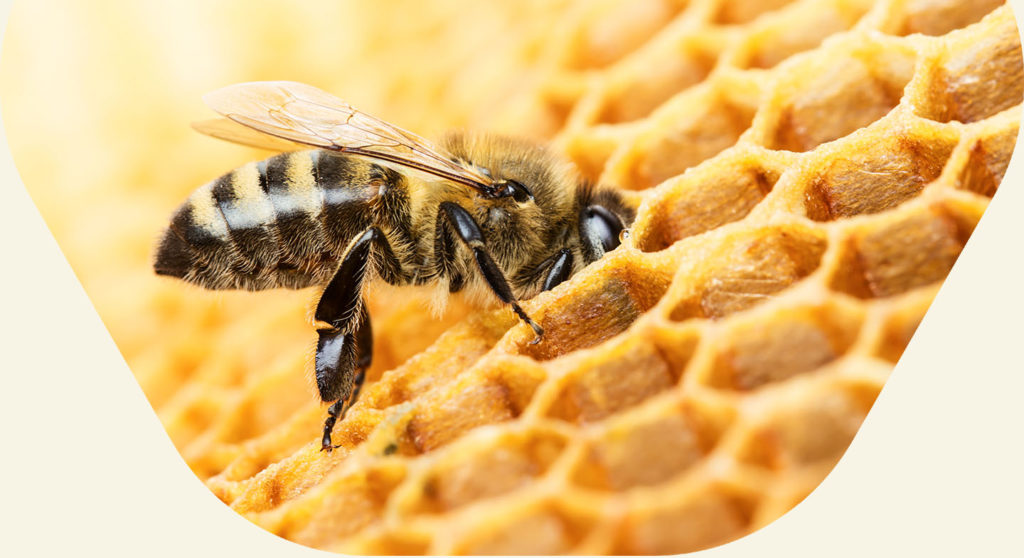API of the Month
Mathieu Domecq
Editor-in-chief of the API blog of the month
This month, the spotlight is on honey given the festival of Candlemas ?. An excuse to eat pancakes with some good honey all month long! But honey is not the subject of your API blog this month. In a change of subject, I want to tell you about the smoker: an essential tool for all your visits to the beehive. We can never have too much information about it!
We are now in our third season since starting the blog. A few new things to look forward to…

The smoker and its fuel
It’s an indispensable friend in the apiary! By the way, we say that “it’s better to forget your veil than your smoker” and for good reason. The smoker is the beekeeper’s symbol. With its thick white smoke, it allows us to manage the bees and limit the number of stings… in theory. If you have not mastered the basics of how to light and use it, you risk attracting your fans.
Humans have used smoke to collect honey from forests since the dawn of time.
So, what is the purpose of smoke?
Smoke calms the bees. Due to a natural reflex, any bee in contact with smoke, which simulates a fire, will gorge itself on the honey to save the production and fly away. However, a honey-filled bee can no longer sting. It is therefore less aggressive. Think about the phenomenon of spring swarming, with its calm and gentle colonies covering the branches.
Note, however, that excess smoke may lead the workers to destroy the queen because they no longer recognise her pheromones (smell identifying the queen), since they are masked by the strange, strong smell from your smoker. Similarly, excess smoke during the honeyflow, when you harvest the supers, will affect the taste of the more subtle honeys, such as acacia or linden honey.
How do I determine whether I’ve smoked my beehive sufficiently?
You’ll find out quickly and often too late. Some bee races like the Buckfast require less smoke than others, such as the Noire. Cultivate the essential habit of keeping your smoker close at hand!
A louder buzzing than normal and the rapid appearance of your bees over the frames should act as a warning. So, a little smoke is needed to send them back down and show them you’re in control.
The hidden facets of the smoker
Think you know everything about how to use it? When we start beekeeping, we don’t pay that much attention when choosing a smoker in the shop. However, they are not all the same!
The smoker is a chimney: it has a long cylindrical section where the fuel burns, and the larger the diameter, the better it works. The bellows act to fan the embers.
The following are some practical tips on this tool:
- Robust leather bellows must be of excellent quality in order to prevent them tearing. The bellows help you to produce the smoke. Some have a small hook to close the bellows for better protection when not in use.
- A protective grill around the smoker prevents you from getting burned. There is also a hook at the front to hang it on the edge of the beehive, keeping it close at hand while avoiding the risk of fire.
- It has an easily cleaned fire chamber for removing the ash. At the very least, it must have a grate at the bottom to create an air pocket and keep the smoke active.
- Thick, robust metal to guard against any shocks (you’ll drop it a few times!) helps to keep its shape for longer. The air must pass through the fuel and not escape between the fire chamber and the outer wall.

(Premium model from ICKO Apiculture)
Choosing your smoker model
There are different retail models of smokers.
Ask your beekeeping shop for advice. The salesperson will get straight down to business depending on your needs (number of hives) and what the shop sells. In any case, don’t bother with models costing less than €20 and opt instead for a practical, solid, quality tool. Plan on spending between €30 and €40 for your smoker.
For experienced and professional beekeepers (20 hives or more), don’t look around – choose the small or large Dadant smoker for better comfort, despite being more expensive than the others at between €50 and €70.
My advice when travelling between your hives: buy a magnetic car stand, so you don’t have to keep extinguishing the smoker only to light it again. Don’t worry, it will stay upright even when crossing bumpy fields!

What fuel to use
You will also need to choose the right fuel, both for your bees and your lungs. Do not use old fabric, corrugated cardboard boxes stuck together with glue, newspaper or non-organic products, which are used far too frequently! Smoke fumes are dangerous. So, opt for a “clean” fuel, such as maritime pine with the tar removed, which you can find in your beekeeping shop. Otherwise, you can use leaves, grass, hay, dried lavender… in other words dehydrated plants that have not been treated in any way.
Once the fuel is selected, place it at the bottom of your smoker and light it with a lighter (be careful in summer). Once you’ve got some nice flames, you can add more fuel to smother them a bit. The smoke then starts to appear. You can add green grass to prevent the nozzle of your smoker from getting clogged with fuel (not easy to clean afterwards). Newly-cut grass cools the smoke down and avoids burning the wings of our bees. Refill the smoker during your visit if necessary.
Bear in mind that the smoke must be very thick and white before you open the hives.
My tip: add pellets like Apidou to the bottom of the smoker first. This will keep your fuel burning for a long time. A handful is enough. But be careful and do not use heating pellets, which are completely inappropriate.
Spring is coming and the season will soon begin…
Thank you for your loyalty, it’s important to us! Keep sending us your photos on social media with the hashtags: #apifonda #apiinvert!
We’re back next month on your API blog with your faithful partner, Les Ruchers De Mathieu!

LES RUCHERS DE MATHIEU
Honey & Beekeeping Shop
Photos ©lesruchersdemathieu


